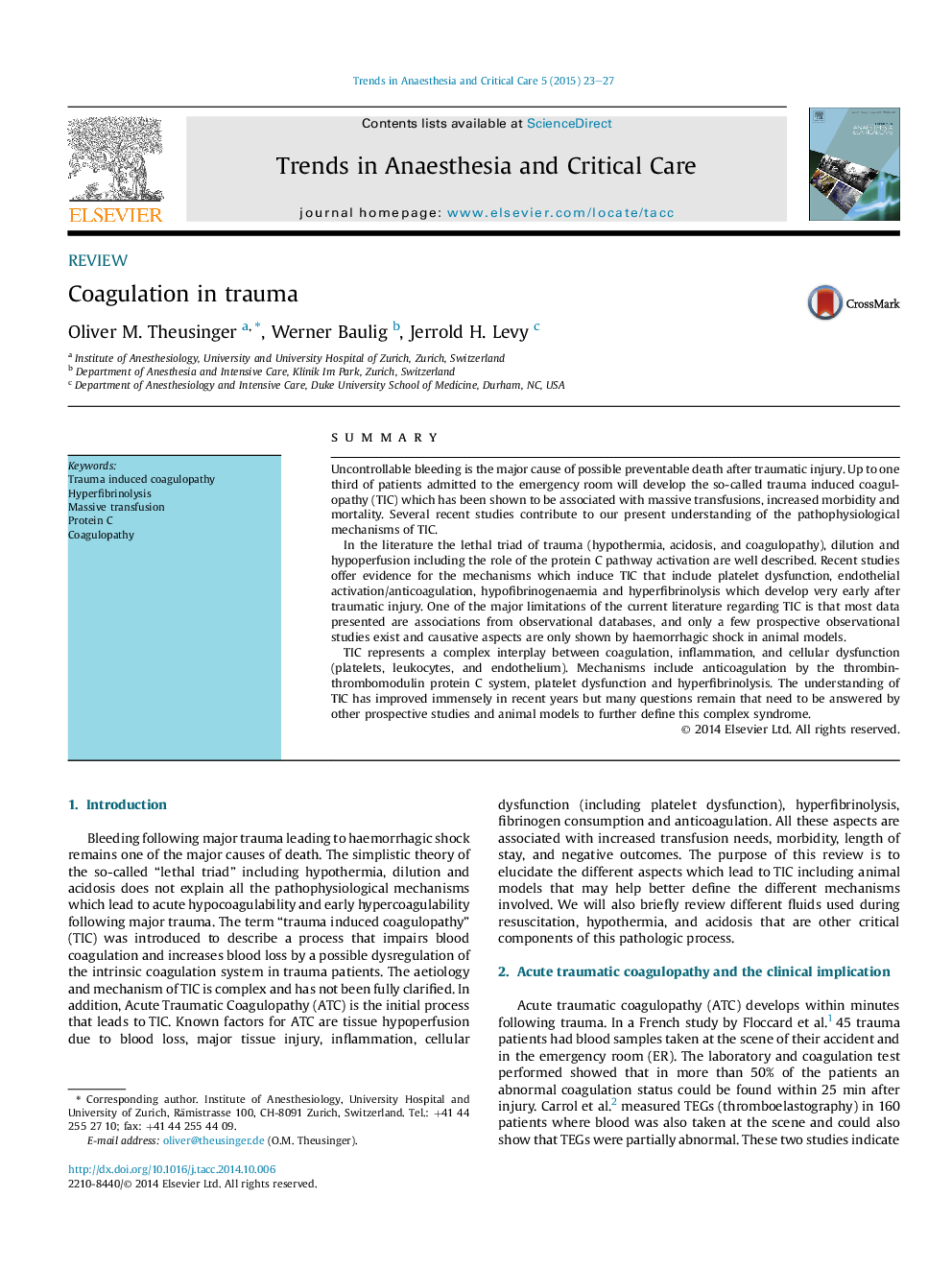| Article ID | Journal | Published Year | Pages | File Type |
|---|---|---|---|---|
| 2772677 | Trends in Anaesthesia and Critical Care | 2015 | 5 Pages |
SummaryUncontrollable bleeding is the major cause of possible preventable death after traumatic injury. Up to one third of patients admitted to the emergency room will develop the so-called trauma induced coagulopathy (TIC) which has been shown to be associated with massive transfusions, increased morbidity and mortality. Several recent studies contribute to our present understanding of the pathophysiological mechanisms of TIC.In the literature the lethal triad of trauma (hypothermia, acidosis, and coagulopathy), dilution and hypoperfusion including the role of the protein C pathway activation are well described. Recent studies offer evidence for the mechanisms which induce TIC that include platelet dysfunction, endothelial activation/anticoagulation, hypofibrinogenaemia and hyperfibrinolysis which develop very early after traumatic injury. One of the major limitations of the current literature regarding TIC is that most data presented are associations from observational databases, and only a few prospective observational studies exist and causative aspects are only shown by haemorrhagic shock in animal models.TIC represents a complex interplay between coagulation, inflammation, and cellular dysfunction (platelets, leukocytes, and endothelium). Mechanisms include anticoagulation by the thrombin-thrombomodulin protein C system, platelet dysfunction and hyperfibrinolysis. The understanding of TIC has improved immensely in recent years but many questions remain that need to be answered by other prospective studies and animal models to further define this complex syndrome.
